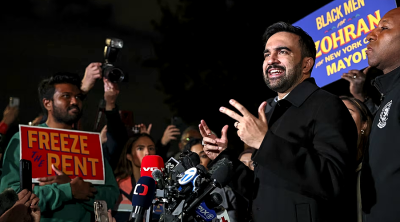Sin Chew Daily
The number of cumulative COVID-19 cases reported in the US topped 25.83 million or 7.8% of the country's population on January 26, over 430,000 killed.
These may not be the actual numbers. According to Columbia University epidemiologist Dr Jeffrey Shaman, the actual number of infections may have breached the 105 million mark, or 31.6% of the US population. He said it would take until end of July to break the chain of infection with the ongoing vaccination program and tightened SOPs.
Meanwhile in Malaysia, over 190,000 people here have been confirmed with COVID-19 infections, making up almost 0.58% of the country's population. But what about the actual number of infections?
If we were to refer to the big data of the US, the unreported hidden cases could be as many as four times the reported positive cases, meaning about 760,000 people could have been infected here.
We are not trying to alarm anyone unnecessarily because we are now going through a very crucial stage that does not warrant us to paint a rosy picture of the crisis, especially when we have not launched our vaccination program yet.
Based on the COVID-19 prediction system developed by the team led by China's Zhong Nanshan, we will report 600,000 cumulative COVID-19 cases by March 24.
But is that prediction reliable? The 188,000 cases reported as of January 25 here was already predicted by Zhong's team last November, with an accuracy of 99.4%!
If we really want to shatter Zhong's prediction, then the measures we implement to stop the virus must be truly effective in sustainably reduce the daily new increases and to bring the R0 value below 1.
Health DG Dr Noor Hisham Abdullah has predicted using the SEIR model that when R0=1.2, we will see daily new increases in excess of 10,000 cases from March 27.
By whichever prediction model, we will still have more than 600k total cases by end of March. And if we were to throw in the unreported hidden cases, the outlook could be extremely bleak.
While rumors were rife that a strict nationwide lockdown would be enforced after Feb 4, the health DG announced Monday evening that a three-month nationwide CMCO would be in place after the MCO ends on Feb 4, with the hope daily new increases could be lowered to double digits by May 11. He said this could be achieved through tighter SOPs while eyeing the completion of the vaccination program by end of the year.
We feel that Noor Hisham has been overly optimistic. US' Dr Shaman has said that with mass vaccination and stricter SOPs, the coronavirus could be put under control earliest by late July, and Noor Hisham should be well aware that even if we strictly adhere to the SOPs, our vaccines may not arrive on time, given the severe global vaccine shortage at this moment.
MCO 2.0 has to be lifted probably as our senior minister Ismail Sabri Yaakob has claimed long-term MCO could bankrupt the country. We don't want the rakyat to die of the virus, but we also don't want them to die of starvation, he has said.
As a matter of fact, both the emergency ordinance and MCO 2.0 have failed to achieve their desired objectives. Over the past 14 days we have reported a total of 44,816 new cases at a daily average of 3,201, far more than the 2,212 daily average for the 19 days up to MCO.
We all know that the virus has an incubation period of 14 days. If we don't see any encouraging results in these 14 days, in order to strike a balance between life and livelihood, then we must make some changes to existing rules!
Senior minister (finance and economics) Azmin Ali feels that a complete lockdown is only the last resort because MCO will lock down the economy with negative impact on millions of Malaysians, including students. He has also proposed stricter and more comprehensive SOPs in the place of MCO.
To be fair, most Malaysians have obediently complied with government SOPs over the past one year. We can see that at least 95% of people around us put on face masks, have their temperatures taken and keep safe social distances. But why are the daily numbers still so high?
Firstly, we have a huge illegal migrant worker community in this country. Secondly, SOP compliance in the manufacturing and construction sectors (workplaces and hostels) is lax. Thirdly, religious and social activities in some rural areas and finally, countless of asymptomatic cases walking all around us.
There are only three ways to stop the virus: full SOP compliance, comprehensive screening and vaccination.
Unfortunately, our minister Khairy Jamaluddin says, "Due to limited funds, we plan to buy at cheaper rates, and so late arrival of vaccines is acceptable."
In view of the current vaccine supply crunch, shouldn't we just send someone to urgently negotiate the issue of vaccine import, as all lives matter?

ADVERTISEMENT
ADVERTISEMENT


































